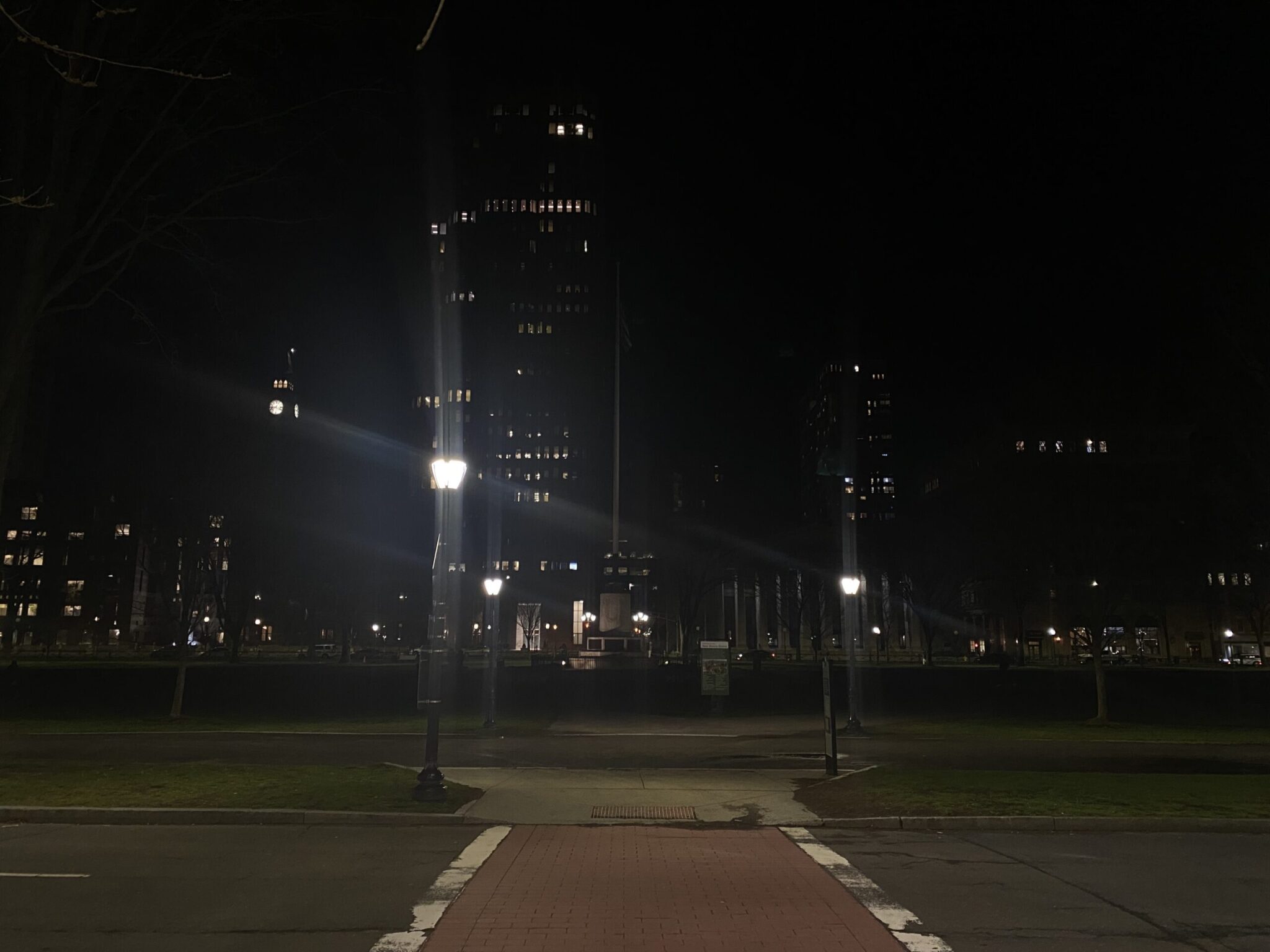Light pollution in Connecticut contributes to millions of bird deaths annually
Light pollution has contributed to decline of American bird population by three billion since 1970; New Haven has passed little legislation to reduce its light pollution.

Courtesy of Leo Shen
Pavla Rosenstein, a New Haven resident, has not been able to sleep since the city installed new street lights in her neighborhood. She has had to buy blackout blinds to sleep in her own room.
“The one right outside of my house is a new LED light. It is extremely bright,” Rosenstein said. “And since it’s been changed, I haven’t been able to sleep through the night.”
When she called the city, she was told that the lamps being used were producing the minimum output required by city standards — 82 watts and 8800 lumens. According to Rosenstein — who looked into the standards of other places — in the United Kingdom, the output in residential areas is only 35 watts, and in other United States cities she looked at, street lamps produce 5000 lumens.
Rosenstein said that her neighbors have voiced similar complaints about disturbingly bright lighting.
On Wednesday, Craig Repasz presented this issue and others caused by light pollution to the Environmental Advisory Council.
According to Repasz, another impact of light pollution in cities is the lethal impacts it can have on birds.
According to Repasz, light pollution has been one contributor to the decline of the United State’s bird population by almost three billion since 1970. Repasz also noted that Connecticut alone has 148 species of birds that will either migrate from Connecticut or through the state, exposing them to Connecticut’s light pollution.
Eighty percent of migratory birds migrate through the night. Researchers have found that they tend to use the stars to navigate. As light pollutes the night sky, birds become disoriented and often fly into cities where they are subject to greater danger.
Since the invention of bright blue LED lights in 2011, there has been an increase in light pollution by nine to 10 percent. These lights, which are very high frequency and high energy, cause significant skyglow and glare. Although LED lights are more energy efficient and environmentally friendly than incandescent lights, they have greatly contributed to the light pollution that is killing so many birds and disrupting so many residents like Rosenstein.
“[Birds] mistake our city lights and the lights in our buildings to be stars, and they come into these areas where they should be flying,” Repasz said. “Unfortunately, they are being drawn into our city areas, our parks, our landscaped areas that are surrounded by glass. This is where the majority of window strikes occur.”
Repasz presented other studies that have shown that light pollution increases risk of breast cancer, prostate cancer and obesity.
Last year, Connecticut passed the “Lights Out” law, which requires all state-owned buildings to turn off their lights between 11 p.m. and 6 a.m. Not only does this save taxpayers millions of dollars per year, but it also significantly reduces the state’s carbon footprint.
New Haven does not currently have a city policy similar to the state “Lights Out” law. Repasz suggested that the implementation of a similar policy in New Haven could be significant in reducing the city’s light pollution.
Repasz noted that small changes could make huge differences when it comes to reducing light pollution. Actions like businesses turning off lights after closing, directing light to walkways instead of flooding light into the sky, using lights with lower lumen outputs or using timers and motion detectors could all significantly reduce light pollution.
“About lights on timers and sensors, I find that passive light minimization does not work, because people lose track of whether the timer or the sensors are working, and they just leave lights on all the time,” Laura Cahn, chair of the Environmental Advisory Council, said. “We should be telling people to turn the lights out. If you’re not using them, turn them out; when you’re done, turn the light out.”
Cahn does not believe that technology can solve the issue of light pollution. Rather, she thinks it is up to individuals and policymakers to take action to reduce light production.
According to the U.S. Department of Energy, 13 percent of the electricity used by homes is for outdoor lighting, and 0.5 kilowatt-hours of energy per house, per night, is wasted by bad lighting.
Correction, April 13: This article has been updated to reflect that light pollution has contributed to — but is not solely responsible — for the decline of the American bird population.
Interested in getting more news about New Haven? Join our newsletter!







